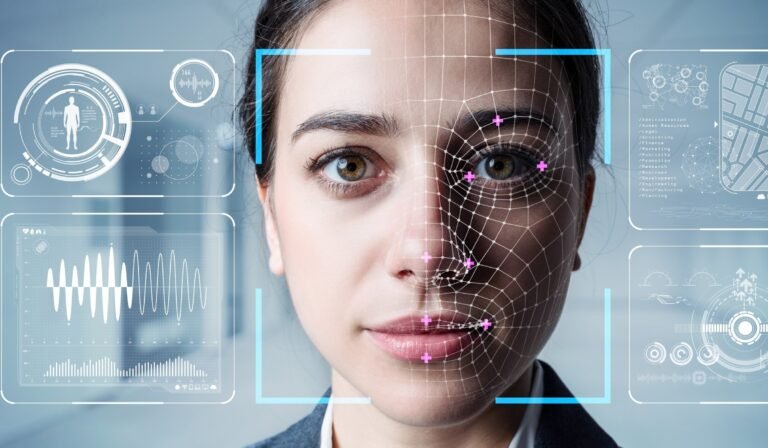In the ever-evolving world of artificial intelligence (AI), one of the most interesting and controversial advances is face swap artificial intelligence. The technology allows users to superimpose one person’s face onto another person’s body in real-time photos, videos, or apps. Whether used for entertainment, digital content creation, or practical use, face-swapping artificial intelligence has captured the public’s imagination with impressive results. However, this technology also raises significant ethical concerns, particularly regarding privacy, consent, and misinformation. In this article, we explore what face-swapping artificial intelligence is, how it works, its potential applications, and the ethical aspects it brings to light.
Understanding Face Swap AI
Face-swapping AI uses deep learning algorithms, specifically neural networks, to analyze and manipulate images of human faces. The system works by identifying key points on a face – the eyes, nose, mouth, and overall structure – and then transfers those features to another image or video. This process, called “deepfaking”, can create highly realistic representations, often indistinguishable from the actual recording.
This technique has become widely popular through various apps and platforms, allowing users to swap faces in a few simple steps. One of the most prominent methods is based on generative adversarial networks (GANs), which train two artificial intelligence models at the same time: one generates the swapped image and the other tries to detect whether it is fake. Over time, the models are refined, resulting in increasingly believable face swaps.
The technology was first used in entertainment, but quickly spread to other industries, from social media to marketing, and even found practical applications in healthcare. However, the more sophisticated the technology, the more the question of its ethical use arises.
An artificial intelligence application for face-swapping
Entertainment and social media
Face-swapping AI took social media by storm with apps like Snapchat, Instagram, and TikTok introducing fun filters that allowed users to swap faces with friends, celebrities or even fictional characters. These playful tools gave people a new way to create content that often went viral due to its entertaining results.
Additionally, face-swapping AI has found its way into Hollywood, where it has been used to age actors, replace stunt doubles, or bring deceased actors back to life for sequels and remakes. For example, artificial intelligence has played a role in the making of movies like Star Wars and The Irishman, showing its potential for realistic, digital enhancements in movies.
Advertising and marketing
Brands have begun experimenting with face-swapping artificial intelligence for personalized marketing campaigns. Instead of traditional ads, companies can now create highly customized promotional videos where the potential customer’s face is embedded in the ad. This can increase engagement and provide a memorable experience that makes the individual feel more connected to the product.
Education and healthcare
In healthcare, face-swapping artificial intelligence is being explored as a tool for medical training and simulation. Surgeons can practice procedures by replacing the patient’s face with a virtual body, creating a more immersive and realistic training environment. In education, face-swapping technology could allow historical figures to “come to life” in classrooms, providing a more interactive and engaging learning experience for students.
Virtual reality and games
The gaming industry is also embracing artificial intelligence with face swapping, which allows players to insert their faces into video game avatars. This improves the user experience by allowing players to play for themselves in digital worlds. Virtual reality (VR) applications also use face swap technology for avatars, making online interactions more personalized and realistic.
Artificial intelligence to swap faces around ethical concerns
While face swap AI offers exciting possibilities, it also presents serious ethical dilemmas. The ease with which the technology can be used to create highly realistic fake images and videos has led to concerns about misuse.
Disinformation and Deepfakes
The most troubling ethical issue is the potential for misinformation. Deepfake videos – videos where artificial intelligence uses face-swapping to create false, often damaging representations of individuals – have already been used in political campaigns, celebrity impersonations and revenge porn. These deep fakes are difficult to detect and can spread quickly, greatly damaging reputations and promoting misinformation.
For example, a famous example involved a deeply fake video of former US President Barack Obama. In the video, it appeared as if Obama was saying things he never actually said, showing just how dangerous this technology can be if it gets into the wrong hands.
Privacy and Consent
Face-swap AI girlfriend free can invade people’s privacy in disturbing ways. With just a few photos, anyone’s face can be turned into potentially embarrassing or harmful content without consent. This lack of control over one’s self-image is a fundamental privacy concern, leading many to argue for stricter regulations on the use of face-swapping technology.
Celebrities and public figures are particularly vulnerable because their faces are readily available online. But private individuals can also be targeted, raising concerns about how personal data is used and shared in the digital age.
Security and fraud
Another big concern is the potential use of artificial intelligence to swap faces for fraudulent purposes. Criminals could use this technology to create fake identification documents, bypass facial recognition systems, or impersonate individuals in a way that is convincing enough to fool security systems. As facial recognition technology becomes more widespread in banking, travel and security, the risks of such attacks are increasing.
Legal and regulatory challenges
Because of the potential harm, there is a growing demand for governments and tech companies to regulate face-swapping artificial intelligence. Some countries, such as China, have already introduced laws requiring AI-generated content to be watermarked, while other regions are working on stricter policies to prevent abuse. However, enforcement remains challenging as technology continues to evolve rapidly and often outpaces regulatory frameworks.
The future of artificial intelligence with face-swapping
As artificial intelligence continues to develop, the capabilities of face swap technology will only improve. The lines between real and fake content will blur even more, making it harder for people to tell the difference. While the entertainment and creative industries will benefit significantly, the darker side of technology will require careful management.
One promising solution lies in the development of artificial intelligence detection tools that can automatically identify whether an image or video has been tampered with. Companies like Facebook and Google have already invested in these technologies to help combat the spread of deepfakes on their platforms. However, even with detection systems in place, ethical issues around consent, privacy, and misinformation will remain.
Conclusion
Face swap AI is a powerful tool with the potential to revolutionize industries from entertainment to education. Its ability to create highly realistic digital content offers new opportunities for creativity and personalization. However, the ethical consequences of its misuse are considerable and must be addressed by strict regulations and the development of detection technologies. As society navigates this complex environment, a balance will need to be struck between embracing innovation and protecting individuals from harm that can arise from AI-generated content.







